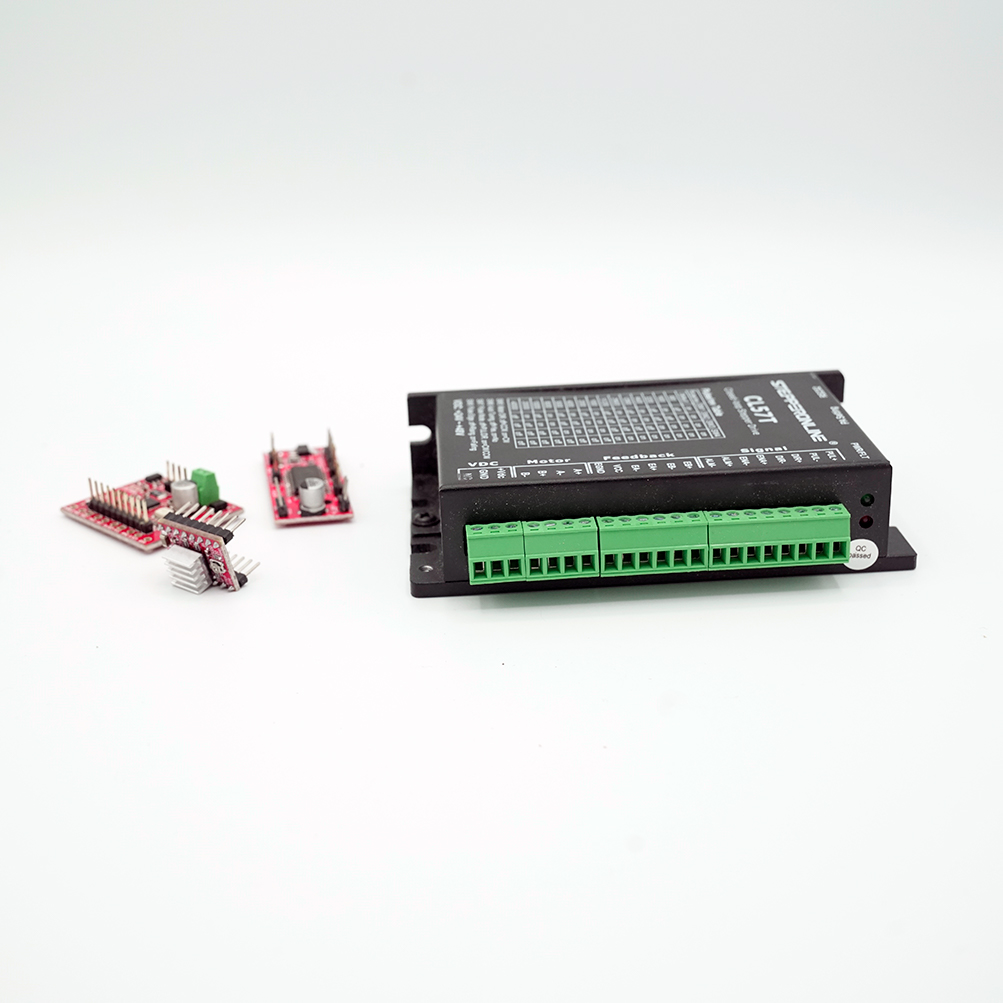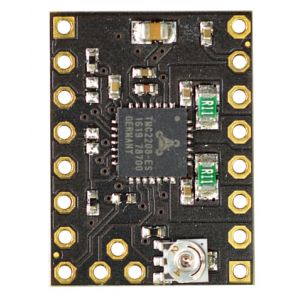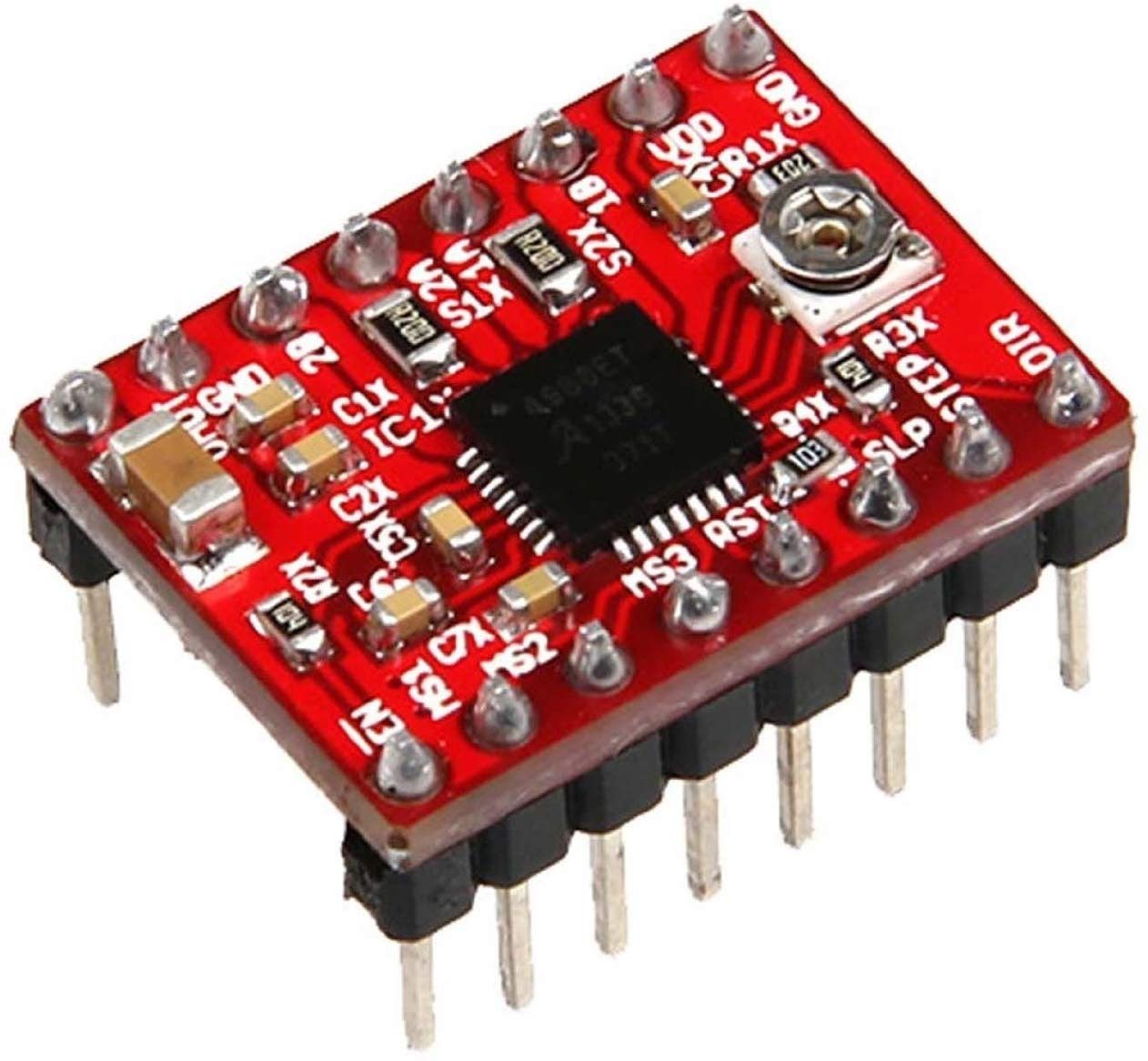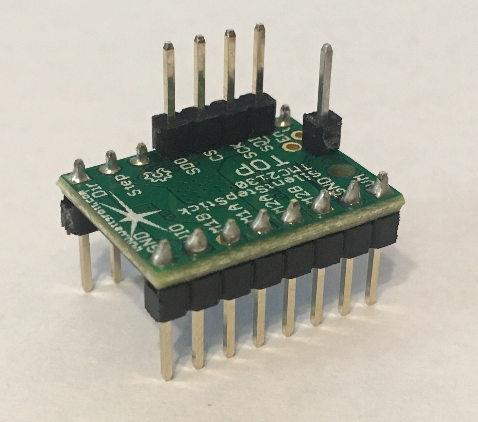Overview
The stepper driver converts signals from the 3D printer controller into stepper motor rotation by sending variable amounts of current to the stepper motor phases to make the rotor step. Let’s walk through the entire sequence of events that end in the stepper motor moving to emphasize the importance of the stepper driver. First, a program known as a slicer turns a digital file to be 3D printed into three dimensional coordinates known as G code. It should be noted that this G code also contain other important information for the printer such as extruder temperatures and fan speeds. When the microcontroller reads a G code coordinate it checks the location of the extruder and determines which stepper motors need to be moved in order to get the extruder to the desired location. The microcontroller then tells the stepper drivers that are responsible for the motors that are off in position to move. The communication between the microcontroller and stepper driver is accomplished through pulses of current. The amount and frequency of these pulses sent from the microcontroller will affect the distance and speed the driver moves the stepper motor.
Choosing a Driver

Every stepper motor that needs to move independently requires its own dedicated stepper driver. But how do you choose the best stepper drivers for your 3D printer? Do some stepper drivers work better than others? Are there certain features that are present on one stepper driver brand but absent on another? These questions could overwhelm the beginner, and in many cases, are not worth asking if you have already chosen a motherboard because the stepper drivers usually come pre-soldered. But maybe you have not yet decided on a motherboard or you bought a motherboard with swappable stepper drivers (known as StepSticks) and you want answers to the above questions. The usual metric for assessing if a certain component is worth its cost in a 3D printer build is the improvement (or lack thereof) in print quality. In the case of stepper drivers, cheap A4988 drivers that come supplied with entry level motherboards are capable of driving stepper motors at 1/16th of their nominal step size, which is known as a microstep. Effectively, this means that a 1.8 degree stepper motor can take 0.1125 degree steps when controlled by a A4988 driver. The magic of microstepping is demystified in its own section. In most 3D printer linear motion/transmission setups a 0.1125 degree step size is sufficient for high resolution prints that are smooth to the touch. So what does the high-end trinamic series of stepper drivers offer?

High-End Drivers
While I am referring to the line up of trinamic stepper drivers as high-end, in reality these stepper drivers only cost a few dollars more than the A4988 drivers. But the printer motherboards that ship with trinamic stepper drivers are usually way more expensive than those that come with the A4988 drivers. The benefits of the trinamic drivers can literally be heard. These drivers can achieve smooth and seemingly vibration free movement of their stepper motors through microstep interpolation. If your 3D printer will be anywhere near where someone will be sleeping, then these drivers are a must. The smoother motion profile of the trinamic stepper drivers also results in a subtle but noticeable increase in print quality for complex parts. Some the trinamic stepper drivers feature a technology known as StallGuard, which as its name suggests allows the stepper driver to sense when the stepper motor stalls. If an obstruction is present on the rails of your 3D printer then the trinamic stepper driver will shut off the motor before any damage to rail, carriage or transmission can occur. Interestingly, StallGuard can be used to sense the limits of a linear guide by running the carriage into the end plate and sensing when the motor stalls. This may not sound like the most elegant solution, but it can be used in the place of limit switches.
External Resources
There are a lot of different ways to successfully build a 3D printer, many of which are not covered on this website. If you want to learn more about stepper drivers, then click through some of the links below to external websites and forums.
Recommended Products
The table below contains parts specific to this section that Dr. D-Flo uses and recommends. Depending on your printer build these parts may or may not be compatible. It is best to use the products below as a launching point to explore similar products on the linked websites. Affiliate links may be present below (depending on the vendor).
| Product | Supplier | Distributor | Description | Link | ||
|---|---|---|---|---|---|---|

|
A4988 Driver | Hobby Power | Amazon | A cost-effective stepper driver capable of 1A per phase and 1/16th microstepping. | ||

|
TMC2130 Driver | Trinamic | Filastruder | A premium stepper driver capable of 1.2A per phase and 1/256th microstepping with silentstep technology. |